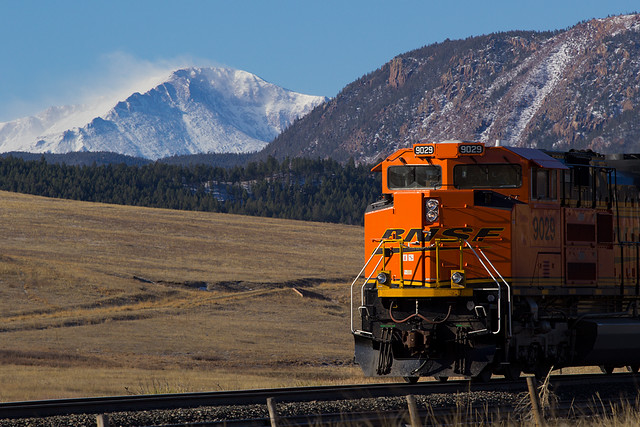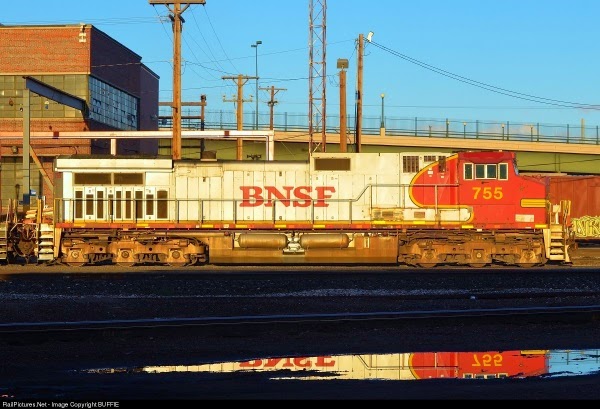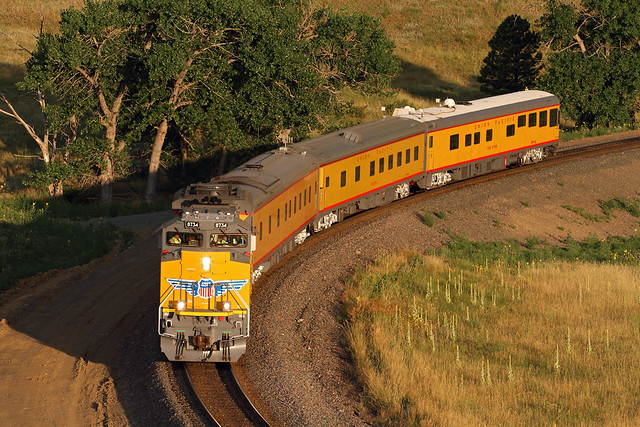 |
| Photo of the Day: Peter Lewis |
Peter Lewis makes his second appearance on Photo of the Day with this entry that has already garnered some attention. Gaining RailPictures.net's trifecta of awards (Screeners Choice, Photo of the Week and People's Choice) is no easy task! I especially enjoy the mirage-like effect of the sky blue reflected off the roofs of the Silverliners! But what seals this choice for Photo of the Day, however, is Mr. Lewis' own notes on the photograph. He says:
Amtrak's westbound California Zephyr negotiates the confines of Ruby Canyon as it nears the Utah border on a captivating August afternoon in the breathtaking American west. When I walked up to the edge and took in the scene for the first time, I was simply in awe. This experience and those like it are one of the biggest reasons I enjoy this hobby. The remoteness and natural beauty of this area is simply incredible, especially for an easterner like me. [emphasis added]
Keep up the great work, Mr. Lewis, and I get the feeling that you'll be making plenty of trips like this one!◊






